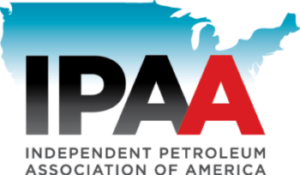May 16, 2012 Independent Review Finds EPA Pavillion Report Lacking in Scientific Data, Methodology and Analysis
Report shortcomings range from poor study to serious errors with monitoring wells
WASHINGTON, D.C. – The Independent Petroleum Association of America (IPAA) today announced the findings of an independent review of the Environmental Protection Agency (EPA)’s draft report, “Investigation of Ground Water Contamination near Pavillion, Wyoming,” released on December 8, 2011.
The review finds that the data and analysis does not support the EPA’s conclusions, including the agency’s primary claim of contamination caused by hydraulic fracturing activity. The review also notes that EPA employed unapproved analytical methods and improperly conducted various field procedures; misinterpreted data used to draw conclusions; and EPA’s “lines of evidence” can be adequately explained with alternative hypotheses.
The review was executed by S.S. Papadopulos & Associates (SSP&A), a leading groundwater and hydrogeology consulting firm with more than 30 years of experience. In this review, SSP&A has conducted a thorough, nonbiased review of the science behind the EPA study, which was intended to address certain complaints about domestic water well taste and odor.
“Through this review, the science speaks for itself,” said Lee Fuller, IPAA Vice President of Government Relations. “Unfortunately, the EPA has continued to miss the mark with its draft report. We encourage EPA to work with the State of Wyoming and the U.S. Geological Survey (USGS), among other stakeholders, to re-examine the two EPA monitoring wells for their suitability to this study’s objectives and to credibly investigate likely sources of potential constituents of concern while adopting strict scientific standards and avoiding guesswork. It is our hope that this study’s flaws will challenge and guide the agency toward better methodology and reporting in the future.”
Any reputable study of potential contamination in the area must be premised on a thorough review of the site-specific hydrogeologic conditions and distinguish among naturally occurring conditions, sources from drilling and hydraulic fracturing activities, and other anthropogenic sources. SSP&A’s review concludes that the EPA did not complete the work necessary to distinguish between these potential sources and identified “contamination” that is not supported by an objective review of the available data.
SSP&A identified the following specific deficiencies related to EPA’s study:
- Poor Study Design, including lack of appropriate conceptual model and failure to evaluate alternative conclusions
- Lack of Baseline and Background Data, specifically related to methane and other natural occurring organic and inorganic compounds, and failure to include and account for local USGS data showing historically poor regional groundwater quality
- Analytical Concerns Leading to Incorrect Conclusions, including detections of compounds of concern in quality assurance/quality control blank samples, poor correspondence between analytical standards and test samples, and utilization of unapproved methods and procedures
- Serious Errors in the Construction, Development and Sampling of Monitoring Wells, the agency drilled two new monitoring wells into known gas producing formations (deeper than any nearby domestic wells) and used this well data to support numerous, key conclusions; in addition multiple concerns regarding the appropriate construction and development of these wells that could potentially explain results EPA interpreted as contamination due to hydraulic fracturing procedures
- Lack of Suitable Samples, as only four samples – two from each of the two new monitoring wells – were used to support the bulk of the EPA’s conclusions
- No Source Identification, as the EPA never addressed the original complaints from the residents as to the source of the bad tasting, and foul smelling drinking water produced from the residential wells
SSP&A concludes, “EPA’s study design was not sufficient to gather the data, nor draw the conclusions it asserts.” EPA must conduct additional work to draw any conclusions related to potential contamination in this area. This work would have to include additional well development and sampling, based on an improved study design that accounts for the hydrogeologic conditions of the sampling area, realistic potential migration pathways and the presence of pre-existing, naturally occurring petroleum compounds and other constituents. Ultimately, this EPA study – and any future studies – must be held to the highest scientific standard, utilize proper scientific methods, and not be released to the public prematurely.
In reviewing the EPA report, SSP&A also reviewed, all available information posted to the EPA Pavillion website, and pertinent information provided by the Wyoming Oil and Gas Conservation Commission and the Wyoming Department of Environmental Quality. It should be noted that at the time the SSP&A report was published, the EPA was still responding to a Freedom of Information Act request submitted by SSP&A in early 2012.
To access SSP&A’s complete review, click here.








